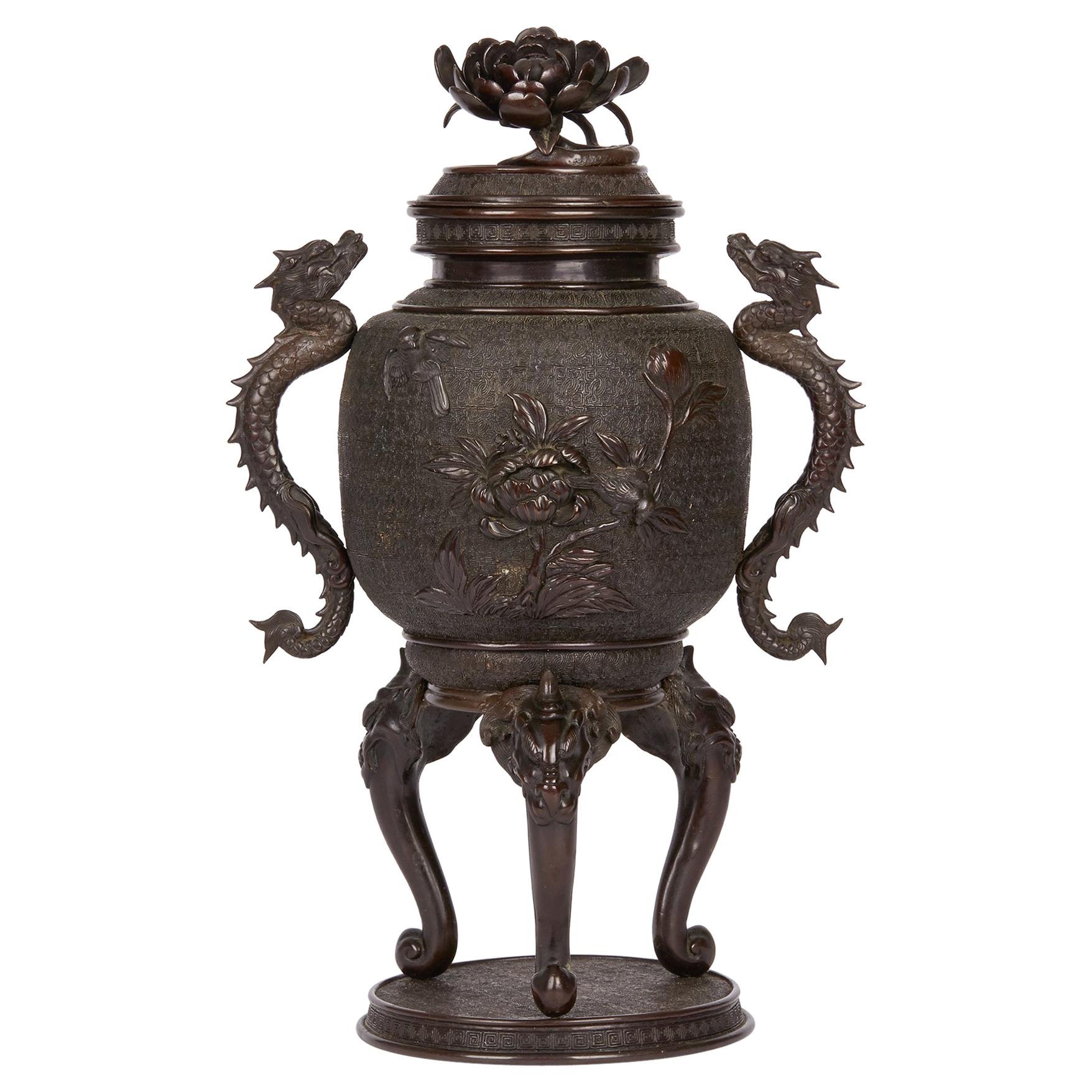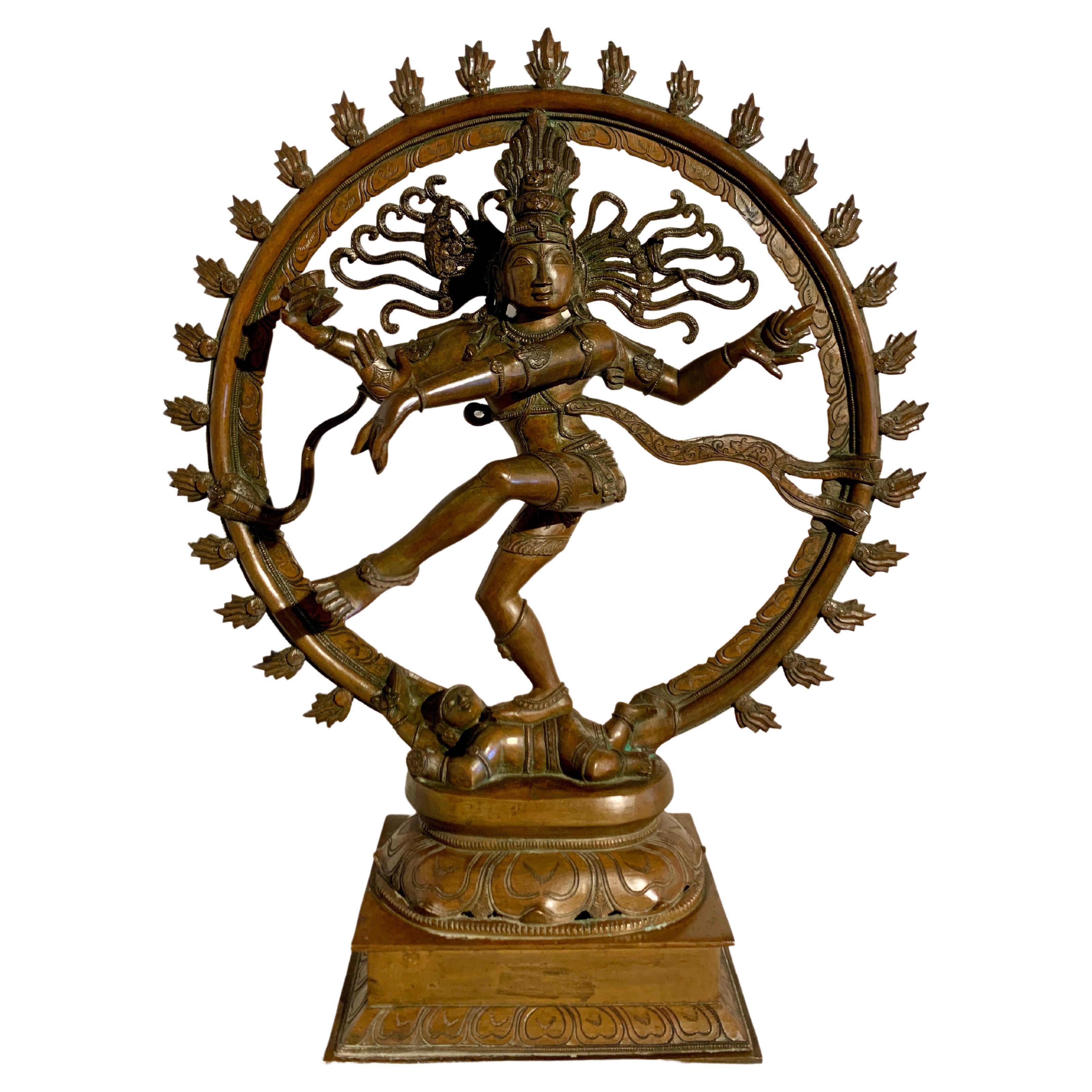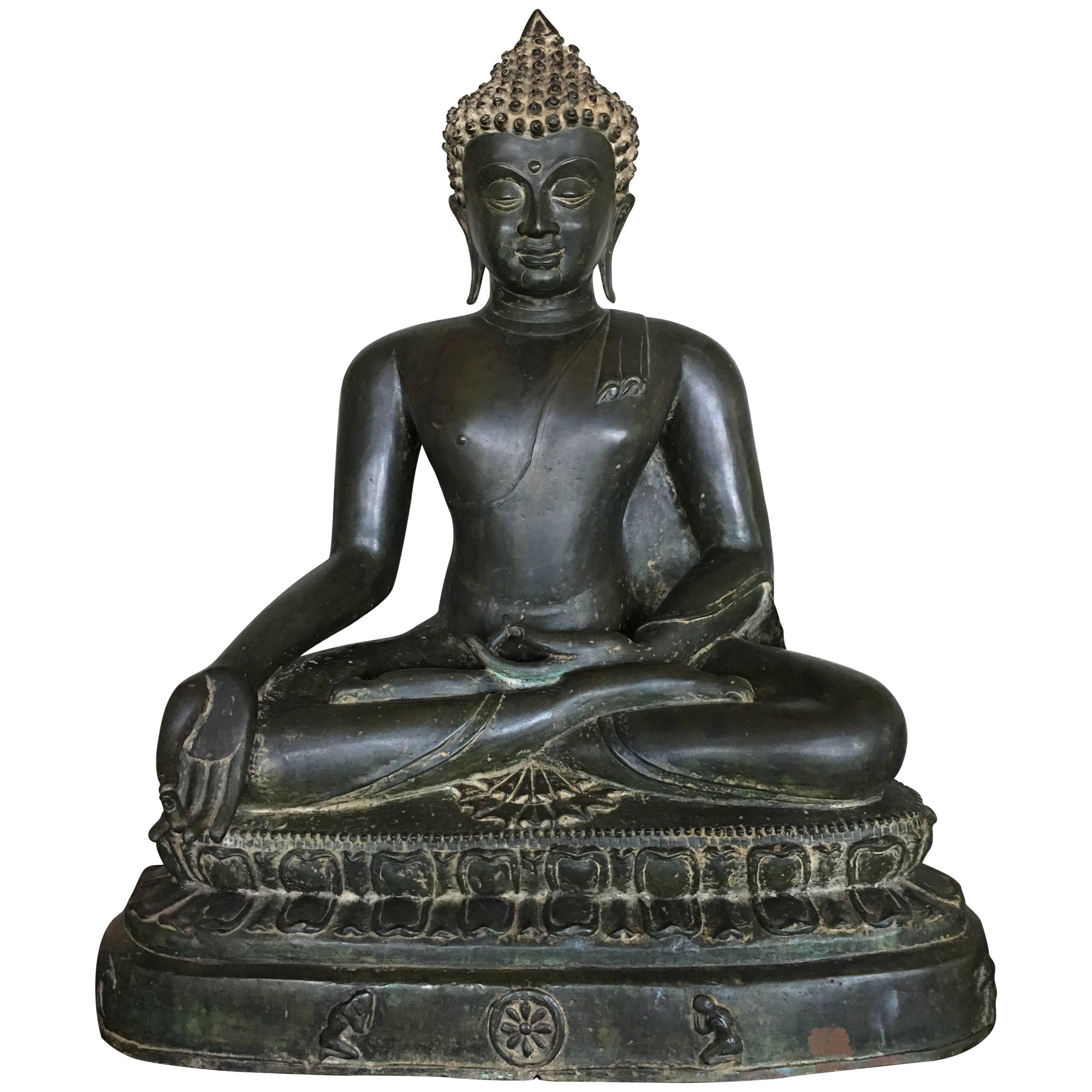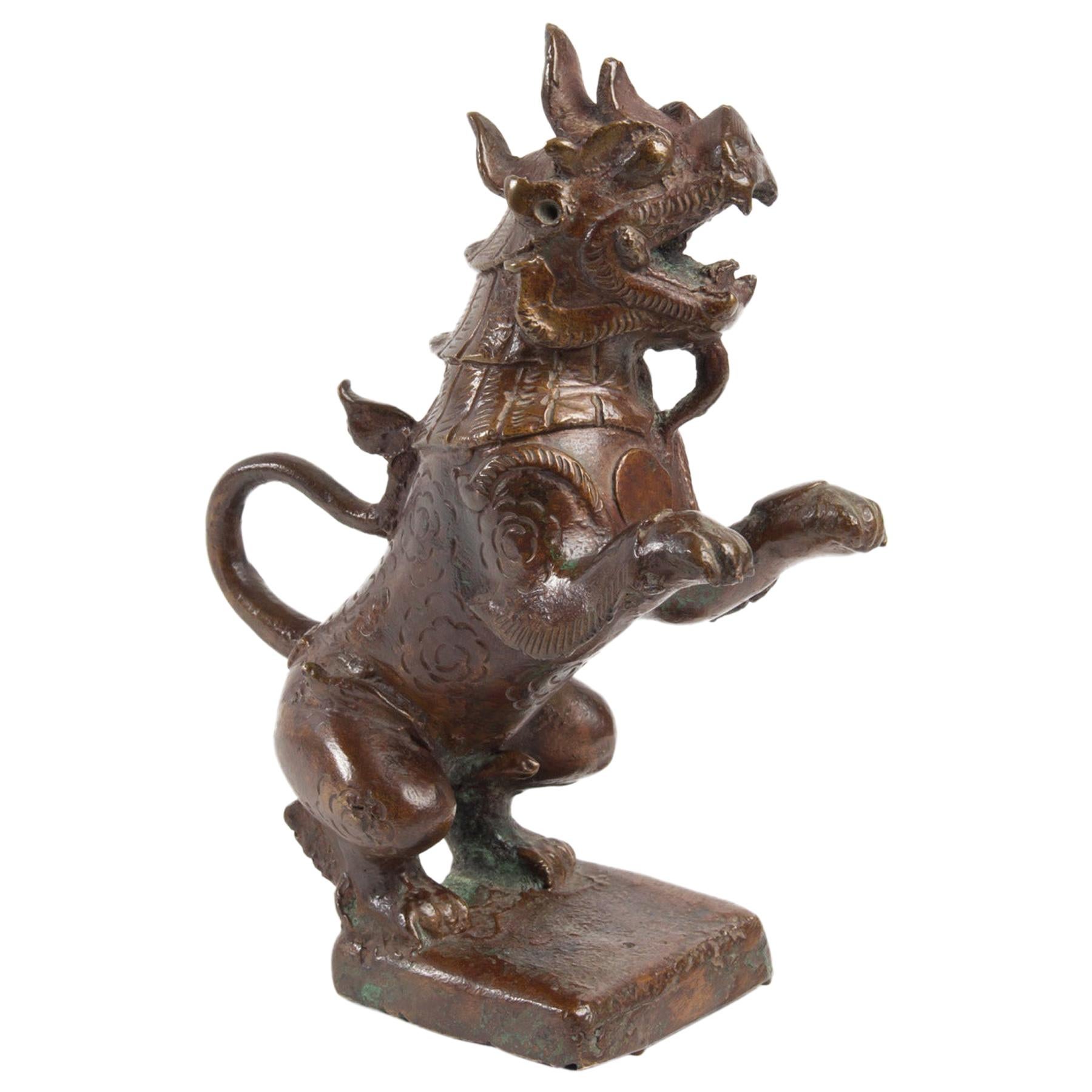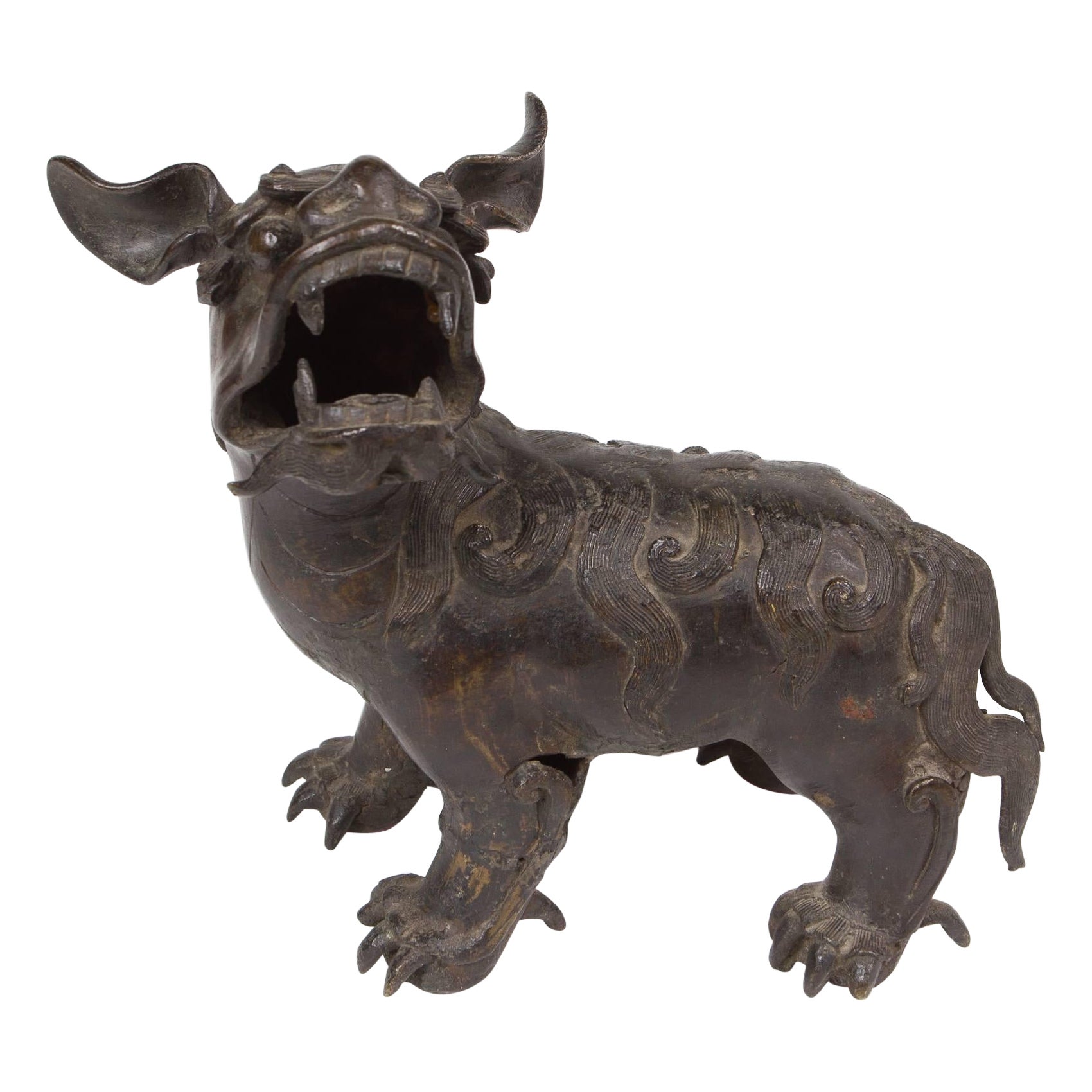Items Similar to Large 19th Century bronze Court Jester, 149cm high
Want more images or videos?
Request additional images or videos from the seller
1 of 8
Large 19th Century bronze Court Jester, 149cm high
About the Item
A wonderfully impressive and amusing classical 19th Century patinated Bronze statue of a Court Jester, signed A. Bolle.
Batch 73 CZZK 60825
- Dimensions:Height: 58.67 in (149 cm)Diameter: 19.3 in (49 cm)
- Style:Romantic (In the Style Of)
- Materials and Techniques:Bronze,Patinated
- Place of Origin:
- Period:
- Date of Manufacture:1860
- Condition:Wear consistent with age and use.
- Seller Location:Brighton, GB
- Reference Number:
About the Seller
5.0
Platinum Seller
These expertly vetted sellers are 1stDibs' most experienced sellers and are rated highest by our customers.
1stDibs seller since 2015
436 sales on 1stDibs
Typical response time: 1 hour
Associations
LAPADA - The Association of Arts & Antiques Dealers
- ShippingRetrieving quote...Ships From: Brighton, United Kingdom
- Return PolicyA return for this item may be initiated within 14 days of delivery.
More From This SellerView All
- 19th Century Silvered bronze mother and children dancing. By CarrierBy Albert-Ernest Carrier-BelleuseLocated in Brighton, SussexAn enchanting classical French 19th Classical silvered bronze statue depicting a mother and her children dancing, mounted on a gilded base. Sign...Category
Antique Late 19th Century French Sculptures and Carvings
MaterialsBronze
- Pair of 19th Century Bronze Musicians, 49cm highLocated in Brighton, SussexA very good quality pair of 19th century French patinated bronze statues with gilded high lights of musicians, the boy holding a harp, entitled ' The Grace of God' and the girl holdi...Category
Antique 19th Century French Romantic Figurative Sculptures
MaterialsBronze
- Japanese Carved Wood Torcha, 19th CenturyLocated in Brighton, SussexA wonderfully hand carved and lacquered Japanese 19th century (51" high) figure of a Samurai.Category
Antique 1890s Japanese Sculptures and Carvings
MaterialsWood
- Large Japanese Meiji period Bronze Lion 34" (87cm) wideLocated in Brighton, SussexA very impressive 19th century Japanese Meiji period (1868-1912) bronze lion on a rock. Signed.Category
Antique 1880s Japanese Sculptures and Carvings
MaterialsBronze
- 19th Century Italian Alabaster statue of a young maiden.Located in Brighton, SussexAn enchanting Italian carved Alabaster statue of a classical semi clad young girl with her arm reaching out, raised on a grey marble pedestal. Statue; 139cm (55") high Batch 75 YNY...Category
Antique 19th Century Italian Sculptures and Carvings
MaterialsAlabaster
- Large Japanese Miayo Bronze figure of Benkei holding a bell. 71cmBy Eisuke Miyao 1Located in Brighton, SussexA large and impressive fine quality Japanese Meiji period (1868-1912) Miyao Bronze figure depicting Benkiei holding a bell above his head, having a wonderful original patination with...Category
Antique 19th Century Japanese Sculptures and Carvings
MaterialsBronze
You May Also Like
- Large Japanese Meiji Bronze Lidded Urn, 19th CenturyLocated in Bishop's Stortford, HertfordshireA large and stylish antique Japanese Meiji bronze lidded twin handle urn standing on a rounded plinth base with tongue and grotesque head formed legs with dragon handles and a flat c...Category
Early 20th Century Japanese Meiji Metalwork
MaterialsBronze
- Large Bronze Dancing Shiva, Nataraja, 19th/20th Century, South IndiaLocated in Austin, TXA heavy and well cast South Indian bronze figure of Shiva Nataraja, or Shiva as Lord of the Dance, in the Chola style, late 19th or early 20th century, India. Shiva is portrayed here in his form as Nataraja, the Lord of the Dance. An iconic and powerful image, Shiva is portrayed engaged in his dance of creation, protection, and destruction, bringing together all his aspects into one sublime form. Shiva dances ecstatically, facing the viewer with his body twisted, his long locks of hair streaming out around him, his four arms in action, with one leg raised, the other stomping on the dwarf demon Apasmara, who represents spiritual ignorance. In one hand he holds a damaru, or ritual drum...Category
Antique Early 1900s Indian Sculptures and Carvings
MaterialsBronze
- Large Burmese Bronze Medicine Buddha, Pagan Style, Late 19th CenturyLocated in Austin, TXA large and magnificent cast bronze image of the Medicine Buddha, Bhaisajyaguru, rendered in the Burmese Pagan style, and most likely based on a period example that was either damaged or lost, 19th century, Burma or Thailand. He can be identified as the Medicine Buddha by the hand that rests in his lap, with his middle finger touching the thumb. A medicine pot or fruit stem would originally have been placed in his upturned palm. The face of this Buddha has been sculpted masterfully. He has a beautiful heart shaped face topped by hair neatly arranged in the typical "snail shell curls", and surmounted by a high ushnisha. Long, pendulous earlobes frame his face, a symbol of his princely past. He gazes serenely outwards from heavily lidded, downcast eyes, a content smile upon his full, lush lips. The Buddha is portrayed seated in vajrasana (full lotus position), his elegant hands displayed in varada mudra, the gesture of granting favors and fulfilling wishes. Long, exquisite fingers extended, the thumb and middle finger touching in a gesture of compassion. He is clothed in a simple kasaya wrapped around his body and over one shoulder, leaving the shoulder and part of his chest bare. The diaphanous garment clings to his body, outlining his well proportioned and graceful, almost sensuous, form. The excess material pooled in neat pleats in front of him. A sash thrown over his shoulder. He sits upon a double lotus base upon a raised platform. The platform features two kneeling attendants, usually interpreted as the monks Ananda and Kasyapa. Between them is a circular disc representing the Wheel of Dharma. Contained in the disk is a flower with eight petals, symbolizing the eightfold path, one of the principle teachings of the Buddha. The sides and back of the platform featuring a series of singha, or lions, representative of the Buddha's royal past. An applied lacquer patina covers the entirety of the image. Large deposits of ash (from incense) are present between the curls of the hair, as well as some the other crevices, indicating this image was the subject of worship for many years. Bhaisajyaguru, also called the Medicine Buddha, or Buddha of Healing, is a revered figure in the Buddhist pantheon as a master able to cure suffering, both physical and spiritual, through his teachings. The Pagan Empire ruled most of present day Burma (Myanmar) from 849 to 1297. The capital, Bagan, served as a both the center of government and religion, where Buddhism reigned supreme. Bagan was also at a crossroads of the Buddhist world, with influence from India, Nepal, Tibet, China, and even Indonesia shaping their culture. As such, Pagan Buddha...Category
Antique Late 19th Century Burmese Sculptures and Carvings
MaterialsBronze
- Bronze Sculpture, Late 19th Century, AsiaLocated in Saint-Ouen, FRBronze sculpture, late 19th century, Asia Measures: H 19cm, W 15cm, W 8cm.Category
Antique 1880s Asian Chinese Export Animal Sculptures
MaterialsBronze
- 19th Century Bronze Chinese Foo DogLocated in Montreal, QC19th century bronze Chinese Foo Dog.Category
Antique 1850s Chinese Archaistic Sculptures and Carvings
MaterialsBronze
- Pair 19th Century Bronze Fu DogsLocated in Dublin 8, IEThese guardian statues were traditionally found standing sentry in front of palaces, temples, and homes of the elite across many parts of Asia. These ...Category
Antique 19th Century Asian Chinese Export Sculptures and Carvings
MaterialsBronze
Recently Viewed
View AllMore Ways To Browse
Asian Art Fragment
Antique Standing Bronze Buddha
Small Chinese Sculpture
Burmese Carved Monk Statue
Antique Chinese Opera Dolls
Chinese Opera Dolls Antique
Chinese Zodiac Ox
Chinese Zodiac The Ox
Green Tara Statue
Nepalese Chest
Used Hakama
Antique Guan Yin
Qilin Mythology
Korean Guanyin
Bronze Dinner Bell
Chinese Jade Incense Burner
Chinese Jade Seal
Fox Kitsune
